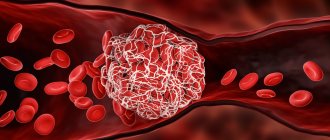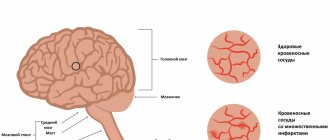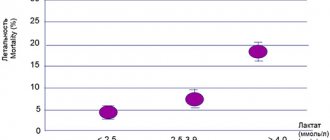Material about a blood test for vitamin D. Everyone knows about the benefits and importance of vitamin D for the body. It is needed for the development of the musculoskeletal system, the strength of bones, teeth and nails, and proper metabolism. It is also known where it comes from: exposure to the sun promotes its synthesis in the body itself, and fatty fish and dairy products replenish reserves from the outside.
How do you know if there is enough of this vitamin, if there is an excess, and what should you do if the balance is upset? The necessary information can be obtained using a special blood test for vitamin D.
Cost of Vitamin D test
| 25-one vitamin D (25-hydroxyvitamin D) | 1 400 ₽ | |
The result will be ready in 2 calendar days.
For details, call: 8!
According to WHO recommendations, the only vitamin that is recommended for everyone without exception is vitamin D. There is scientific evidence that its sufficient level protects against infectious diseases or alleviates their course. According to the medical resource Medscape, patients hospitalized due to severe coronavirus infection had lower levels of vitamin D compared to healthy people. Also, adequate levels of vitamin D reduced the risk of complications and death in hospitalized Covid patients. The minimum preventive dose of vitamin D for adults is 2000 IU/day. But people with its deficiency or insufficiency need to take a higher, therapeutic dose, which is prescribed by a doctor based on a blood test.
What foods contain vitamin D?
| Food | Amount of vitamin D (D2 and D3) in IU |
| Wild salmon | 600-1000 IU per 100 g |
| Farm raised salmon | 100-250 IU per 100 g |
| Herring | 294-1676 IU per 100 g |
| Som | 500 IU per 100 g |
| Canned sardines | 300-600 IU per 100 g |
| Canned mackerel | 250 IU per 100 g |
| Canned tuna | 236 IU per 100 g |
| Fish fat | 400-1000 IU per 1 tbsp. spoon |
| UV irradiated mushrooms | 446 IU per 100 g |
| Mushrooms not irradiated with UV | 10-100 IU per 100 g |
| Butter | 52 IU per 100 g |
| Milk | 2 IU per 100 g |
| Milk fortified with vitamin D | 80-100 IU per glass |
| Sour cream | 50 IU per 100 g |
| Egg yolk | 20 IU per 1 piece |
| Cheese | 44 IU per 100 g |
| Beef liver | 45-15 IU per 100 g |
The inactive form of vitamin D enters the body with food and is formed in the skin under the influence of UV rays. Then the liver undergoes a process of hydroxylation and conversion of the inactive form of the vitamin into 25(OH)D (calcidiol). Next, active vitamin D is formed in the kidneys - 1.25 (OH)2D (calcitriol). Vitamin D content is usually assessed by the concentration of calcidiol 25(OH)D in the blood. It is a more indicative marker, since its half-life is 2-3 weeks.
Role in the body
The main functions of vitamin D include:
- Capturing and ensuring absorption into the blood of such important microelements as phosphorus and calcium. The process occurs in the small intestine, where they are released from food during digestion.
- Strengthening the transcription of nucleic acids in cell nuclei, which promotes the process of cell reproduction and reduces the likelihood of genetic mutations.
- Participation in metabolic processes, thereby increasing immunity and preventing various diseases of the heart, blood vessels and endocrine system (atherosclerosis, diabetes mellitus, and autoimmune pathologies are directly related to vitamin deficiency).
- Regulation of the synthesis of important hormones, such as parathyroid. A lack of calciferol leads to increased production of parathyroid hormone, which, in turn, inhibits the process of bone tissue formation.
Thus, vitamin D is vital for the normal functioning of the entire body. It strengthens immune defense, ensures proper development of the skeleton and muscle function, regulates hormonal levels, prevents diseases of the cardiovascular and endocrine systems, musculoskeletal system, and skin. In addition, the formation and development of cancerous tumors depends on the level of vitamin D.
Why is vitamin D deficiency so widespread?
Firstly, the geographical location of our country. In most of Russia, from late autumn to early spring, virtually no vitamin D is synthesized in the skin, since during this period the level of solar insolation is reduced. Also, polluted air and dust interfere with the formation of vitamin D. Secondly, a connection has been established between early aging and the development of malignant skin tumors with exposure to UV rays. In this regard, it is recommended to spend less time in direct sunlight and use sunscreen. This, in turn, prevents the natural formation of vitamin D in the skin and leads to its deficiency in the body. Vitamin D deficiency is also common in dark-skinned people, since the pigment melanin is a factor that protects the skin from UV rays and interferes with the production of the vitamin.
Unfortunately, most people's diet does not include foods with sufficient vitamin D content. There are people who do not like fish at all or prefer less fatty varieties, while the highest content of the vitamin is in fatty fish. Also, vitamin D deficiency may be associated with impaired absorption in the digestive tract. People who are overweight also have a deficiency, since the vitamin accumulates in subcutaneous fat and does not enter the general bloodstream or other organs.
Indications for analysis
When is it necessary to conduct a blood test for calciferol levels? Usually it is prescribed by a doctor (you can take a vitamin D test yourself, in a paid laboratory) in the following cases:
- growth retardation and bone deformities in children;
- pain in bones and joints, osteoporosis in adults;
- frequent fractures;
- photodermatitis;
- increased parathyroid hormone levels;
- gastrointestinal diseases (digestive disorders, colitis, chronic pancreatitis, Crohn's disease);
- systemic lupus erythematosus, especially with extensive damage to the skin;
- decrease in blood concentrations of phosphorus and calcium according to biochemical studies.
The analysis is mandatory before operations on bone tissue, dental implantation, and also for bedridden patients.
Prophylactic doses for different categories of patients
| 1 month – 1 year | 1000 IU/day |
| 1 year – 3 years | 1500 IU/day |
| 3 years - 18 years | 1000 IU/day |
| 18-50 years old | At least 600-800 IU/day |
| Over 50 years old | At least 800-1000 IU/day |
| Women planning pregnancy | 600-800 IU/day |
| Pregnant and nursing |
|
Correction of vitamin D deficiency and prescription of treatment is carried out by a therapist, general practitioner, or pediatrician in children.
Bibliography
- Clinical guidelines “Vitamin D deficiency in adults, 2021, Russian Academy of Endocrinologists.”
- National program “Vitamin D deficiency in children and adolescents of the Russian Federation: modern approaches to correction”, 2017
- .Methodological recommendations “Program for optimizing feeding of children in the first year of life in the Russian Federation”, 2019
The normal level of vitamin D in the blood of women and men
For a long time, there has been debate in the scientific community about which form of calciferol provides the maximum information about its content in the blood and what values are considered normal. Currently, the best option is to measure the volume of intermediate hydroxy-calciferol - 25 OH vitamin D - in blood plasma.
The norm for a person to ensure healthy bones and the body as a whole is a level of at least 30 ng per milliliter. And although it was not possible to find a positive effect of increasing the level, sometimes a range of 75 to 125 ng per milliliter is considered optimal. For vitamin D, the norm in the blood of men and women is the same. More details about the most modern interpretation of values are in the table:
| D status | Plasma concentration, ng/ml |
| Pronounced deficiency | less than 10 |
| Insufficient consumption | from 10 to 30 |
| Norm | 30-100 |
| Hypervitaminosis | more than 150 |
Laboratory diagnostics
Mass screening to determine vitamin D levels is not recommended. First of all, blood should be donated to people at risk. And this:
- Persons with bone diseases (rickets, osteoporosis)
- People over 60 years old
- Obese people
- Pregnant and nursing
- Black faces
- Patients with kidney disease
- Patients with inflammatory bowel disease, cystic fibrosis
- Persons taking certain medications (glucocorticoids, antiretrovirals, antifungals).
Causes and symptoms of deficiency
Among deviations from the norm, hypovitaminosis D is the most common. Of the possible causes of vitamin deficiency, the most significant are:
- Malfunctions of the kidneys, liver, and intestines. If one of these organs is dysfunctional, the process of absorption and transformation of cholecalciferol into its active form is disrupted.
- An unbalanced diet, in which there are not only insufficient sources of vitamin D, but also fats for its absorption.
- Low levels of vitamin D in the blood of women during pregnancy are often associated not only with increased body needs, but also with the rapid gain of excess weight by the expectant mother. In this case, the vitamin does not participate in metabolism, but is deposited in fat deposits, entering the blood in insufficient quantities.
- Lack of exposure to sunlight. Climatic conditions, wearing closed clothing, and using protective cosmetics can lead to cholecalciferol deficiency.
It should be borne in mind that even regular irradiation does not guarantee sufficient synthesis of vitamins. For example, atmospheric pollution prevents ultraviolet radiation from passing through it. Wavelength also matters: tanning is most beneficial in the morning and at sunset. In addition, with age and in the presence of dark skin, the process of cholecalciferol production is slower.
Vitamin D deficiency at an early stage is indicated by insomnia, fatigue, loss of appetite, burning in the throat, decreased visual acuity, deterioration of the teeth, hair, nails and skin, and muscle cramps. Later, these symptoms may be accompanied by bone pain (and frequent fractures), problems with blood vessels, and the heart. In children, deficiency is manifested by slow growth and characteristic curvature of the limbs due to osteomalacia (softening of bone tissue) - rickets.
Vitamin D deficiency
Doctors consider vitamin D to be one of the most important biologically active substances necessary for the normal functioning of all organs and systems of the body. Moreover, despite the fact that calciferol is a vitamin, in the structure of its molecule it resembles more of a hormone, which probably explains such a close involvement of this substance in many biochemical processes in the body. Naturally, in order for these processes to proceed correctly, you need a sufficient supply of vitamin D in the body. How much of this substance is needed daily? What are the signs of its deficiency? Why this deficiency occurs and how to prevent it - our article is about all this.
Why does the body need vitamin D?
When talking about the functions of vitamin D, it is customary to first mention its most important role in the regulation of calcium and phosphorus metabolism. Simply put, without the presence of calciferol in the body, normal calcium absorption is completely impossible. However, this is only one of more than three dozen critical roles that vitamin D plays in our bodies.
Calciferol takes part in the functioning of the immune system, and it is necessary for the adequate functioning of all parts of the immune system. But many people forget that the immune system protects the human body not only from infectious factors, but also “internal enemies” - cells with impaired division, in other words, tumor cells. Such cells constantly appear during the life of everyone, even an absolutely healthy person, and it is the immune system that prevents the development of malignant tumors from them.
Moreover, recent studies have shown that calciferol has a direct protective and preventive effect against some specific oncological pathologies, for example, breast cancer. It is reliably known that it occurs less frequently among people provided with a sufficient amount of calciferol (from food, vitamin complexes, or living in conditions of sufficient insolation), and taking increased doses of vitamin D for these diseases can significantly increase the survival rate of patients.
In addition to the functions described above, vitamin D is necessary for the normal functioning of the heart and blood vessels, muscle tissue, pancreas, reproductive system and endocrine glands. Another function of calciferol was discovered relatively recently: vitamin D in the human body also works at the genome level. One of the active forms of calciferol, calcitriol, is involved in the regulation of more than two hundred genes responsible for the functioning of a wide variety of organs and systems.

How do you know if you're getting enough vitamin D?
Simply counting the amount of calciferol a person receives is not enough. This is due to the fact that this vitamin can enter the human body from three sources at once: food products, supplements and preparations with vitamin D, and can also be synthesized in the skin under the influence of sunlight. At the same time, it is possible to relatively clearly calculate the amount of calciferol only in vitamin preparations. The level of calciferol in foods can vary significantly, and the process of the skin’s own synthesis of the vitamin depends on a number of factors: the angle at which the sun’s rays hit the ground, the time of year, the presence of clothing on the body, time of day, duration of exposure to the sun, skin tone , availability of sunscreen and so on. Therefore, in order to determine whether a particular person is provided with calciferol, it is better to turn to another method: calculating the concentration in the venous blood of the transport form of vitamin D - 25(OH)D. Like most other biochemical blood tests, this study should be performed in the morning, on an empty stomach.
Table 1. Interpretation of analysis data:
| State | Blood 25(OH)D level (ng/ml) |
| Normal Vitamin D Levels | 30–100 |
| Moderate hypovitaminosis D (deficiency) | 20–29 |
| Hypovitaminosis D (deficiency) | 10–19 |
| Vitamin D deficiency (profound deficiency) | <0 |
| Hypervitaminosis D (excess) | >150–200 |
Sometimes the Sulkovich test is mentioned as a diagnostic technique to determine the body's supply of vitamin D. This analysis is not a direct method for studying vitamin D levels; it only indirectly indicates the concentration of calciferol, since it determines the concentration of calcium in the urine. Moreover, the Sulkovich test is semi-quantitative, that is, it determines the presence and approximate amount of calcium, expressing it with the signs “+„, “++” and so on. Moreover, the amount of calcium excreted in the urine depends on a number of factors in addition to the level of vitamin D in the blood. Therefore, the Sulkovich test is not suitable as a reliable diagnostic test for determining calciferol levels.

Vitamin D deficiency: who is at risk?
Every second inhabitant of our planet suffers to a greater or lesser extent from insufficient intake of vitamin D in the body. Moreover, we are not talking only about residents of countries with a low standard of living: hypovitaminosis D is not uncommon in prosperous countries of Europe or North America. Anyone can experience calciferol deficiency, but there is a risk group in which the likelihood of such a deficiency is increased for one reason or another.
The risk group for hypovitaminosis D includes:
- children from birth to 5 years - active growth and development of the musculoskeletal system require a large amount of calcium, during the metabolism of which vitamin D is consumed;
- people over 65 years of age - in old age, the internal synthesis of calciferol in the skin gradually slows down, the body begins to experience its deficiency;
- Pregnant and lactating women - the body consumes a high amount of calcium and requires an increased level of vitamin D to replenish it;
- people living north of the 40th parallel (in the southern hemisphere - south of the 40th parallel) - in these latitudes the level of solar illumination is insufficient for year-round synthesis of a sufficient amount of calciferol in the skin;
- overweight people (with a BMI of 35 or more);
- people with dark and tanned skin - the pigment melanin, which gives the skin a tan, is a natural factor that provides protection from ultraviolet rays. However, under the influence of ultraviolet radiation, vitamin D synthesis also occurs, so in people with dark skin its intensity is lower;
- people suffering from certain chronic kidney diseases, since it is in the kidneys that calciferol is converted into active forms;
- people who have reduced intestinal absorption function - in this case, not all calciferol coming from food and vitamin supplements may be absorbed into the blood;
- people taking medications that interfere with the metabolism of vitamin D: anticonvulsants, some anti-tuberculosis drugs (rifampicin, isoniazid), statins;
- people whose exposure to the sun is limited for various reasons (patients in closed clinics, people with limited mobility, office workers, workers in professions that require being indoors during the entire daylight hours, people who constantly work night shifts, etc. );
- people who wear covered clothing for religious or aesthetic reasons;
- people suffering from albinism and other skin pathologies, in which even short-term exposure to the sun without products with a high sun protection factor leads to sunburn;
- adherents of a vegetarian diet - plant foods contain negligible amounts of vitamin D;
- people with food allergies to foods with high levels of calciferol (red fish, cod liver, seafood, eggs, cheeses).

Hypovitaminosis D: what signs should alert you?
The insidiousness of calciferol deficiency is that this condition occurs gradually and does not have pronounced symptoms (with the exception of rickets in children). At the same time, chronic deficiency of calciferol in the body, taking into account the functions of this substance, can lead to dangerous consequences: pathological bone fractures, disturbances in the functioning of the heart and blood vessels, and an increased risk of cancer pathology.
Therefore, it is important to identify calciferol deficiency as early as possible and promptly compensate for it. Signs of probable hypovitaminosis D are as follows:
- an increase in the incidence of infectious diseases, frequent purulent complications of even minor injuries, prolonged healing of wounds - this is explained by the involvement of vitamin D in the functioning of the immune system at all its levels;
- a feeling of chronic fatigue, weakness, inability to concentrate even on ordinary everyday tasks that previously did not require serious effort - may be associated with impaired absorption and metabolism of substances obtained from food due to calciferol deficiency;
- decreased emotional background - modern research suggests a direct connection between hypovitaminosis D and seasonal depression, since it has been proven that calciferol metabolites play a role in maintaining sufficient levels of serotonin (the “happiness hormone”) in the brain;
- weakness of bone tissue, the occurrence of its softening (osteomalacia) or fragility (osteoporosis) due to impaired calcium metabolism; pain in the joints, back - can also be a consequence of calcium metabolism disorders, which are regulated by vitamin D, especially in older people;
- muscle pain - calciferol metabolites increase the elasticity of muscle fibers, thus protecting them from microdamage during contraction; aching, wandering muscle pain often indicates a vitamin D deficiency;
- the appearance of excess body weight - vitamin D takes part in the functioning of the endocrine glands and can contribute to disruption of carbohydrate-fat metabolism, which results in extra pounds.
Naturally, all of the above symptoms can be the result not only of hypovitaminosis D, but also of other conditions. But when diagnosing the causes, we must not forget about the likelihood of calciferol deficiency and it is recommended to determine its level in the blood to exclude such a cause.
Also, hypovitaminosis D can aggravate the course of a number of chronic diseases: migraines, arterial hypertension, atherosclerosis, arrhythmia, autism spectrum disorders, Alzheimer's disease, senile dementia, depression, sleep disorders, diabetes mellitus (both types 1 and 2), skin diseases (eczema , psoriasis, neurodermatitis), bronchial asthma, periodontal disease, Crohn's disease and many other pathologies.
Rickets
One of the consequences of vitamin D deficiency in infancy is rickets, a metabolic disease that occurs as a result of disturbances in phosphorus-calcium metabolism. Early signs of rickets corresponding to stage I of the disease: child restlessness, loss of appetite, sweating, bald spots on the head, bowel movements. If at this stage urgent correction of hypovitaminosis D is not undertaken, grade II+III rickets occurs: bone deformation develops (flattening of the occiput, curvature of the ribs and pelvis, curvature of the limbs), the growth and development of the child slows down (both physical and mental), growth is impaired teeth.
How to correct vitamin D deficiency?
As a rule, the optimal solution is an integrated approach, which includes three areas:
- enriching the diet with foods rich in vitamin D;
- increasing the level of insolation (walking in the sun, course visits to the solarium during periods of lack of sunlight);
- taking vitamin D supplements.
In some cases, some of the listed points have to be excluded: for example, a person with albinism is contraindicated to be in the sun, and a person who strictly follows a vegetarian diet will not eat foods with calciferol. Therefore, the most important role is played by taking drugs with calciferol.
It is a common belief that since vitamin D is fat-soluble, the preparations must also be oil-based, otherwise calciferol will not be absorbed. Practical research has refuted this claim. Indeed, in nature, vitamin D is found mainly in high-fat animal products. But synthetic additives and water-based preparations with calciferol provide no less effective absorption of the drug than oil-based products. Moreover, there are even more convenient for modern people, and at the same time no less effective chewable tablets with vitamin D - they are comfortable to take at any time and anywhere, you can take them with you on a trip, an important point - with their help it is easy to comply with the necessary dosage (while you can make a mistake when dropping drops), without the risk of getting an excess of calciferol.
The dosage for the treatment of hypovitaminosis D depends on the level of calciferol in the blood.
| Blood 25(OH)D level (ng/ml) | Therapeutic dose of vitamin D, including for residents of the northern regions of Russia, IU/day. | Duration of treatment |
| 20-29 | 2000 | 1 month |
| 10-19 | 3000 | 1 month |
| <10 | 4000 | 1 month |
Monitoring the effectiveness of correction of hypovitaminosis D is carried out by regular blood testing for 25(OH)D levels. In some cases, the dosages given in the table can be adjusted by the doctor - for example, if we are talking about a patient with significant excess weight or impaired intestinal absorption function.
After the course of treatment for hypovitaminosis D is completed, the dose of the drug is gradually reduced, bringing it to the recommended preventive dose.
What you need to know about preventing hypovitaminosis D?
Preventive measures are simple: if possible, you need to enrich your diet with foods rich in calciferol (in Russia - all year round) - fatty fish, especially salmon, cod liver, eggs, hard cheese. In summer, it is recommended to spend at least 30 minutes in the sun from 11 to 16 hours (excluding an hour and a half around noon, when the sun is at its zenith and can cause skin burns). In winter, if there are no contraindications, you can visit the solarium for preventive purposes, and the sessions should be short, no more than 3-4 minutes.
And the main point of prevention is to regularly take calciferol supplements. This is the most reliable and safe way to saturate the body with the vitamin that is so necessary for health.










